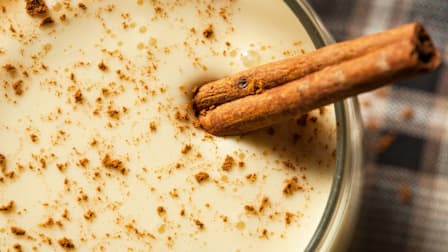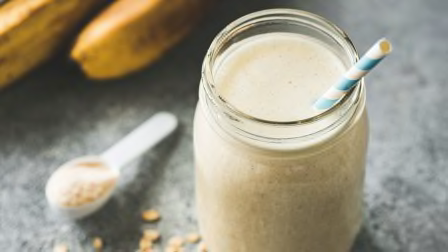Is Dairy Good for You?
What the latest research says about milk, cheese, yogurt, and your health
When you shop through retailer links on our site, we may earn affiliate commissions. 100% of the fees we collect are used to support our nonprofit mission. Learn more.

Dairy foods are a big part of many older Americans’ diets. According to a 2021 International Food Information Council survey, almost 80 percent of men and women age 55-plus eat it in one form or another several days a week.
But some people think plant milk is healthier, question whether dairy is necessary, or believe dairy is harmful. It’s true that it’s rich not only in nutrients, especially protein, calcium, and potassium (and milk has vitamin D), but, for whole-milk varieties, also in saturated fat. And raising dairy cows has environmental impacts. Our review of the evidence can help you decide whether to eat dairy—and what kind.
Dairy and Disease Prevention
When you look at the science, the idea that dairy foods can be good for you holds up overall, but not everything we think we know about dairy turns out to be accurate.
Heart disease: The Dietary Guidelines for Americans recommends cutting back on heart-risky saturated fats by eating low- and nonfat instead of full-fat dairy. But “you can’t judge a food by its saturated fat content,” says Dariush Mozaffarian, MD, dean of the Friedman School of Nutrition Science and Policy at Tufts University in Boston. “There are many different saturated fats, and each has potentially different health effects.”
How to Fit Dairy Into Your Diet
Both Willett and Mozaffarian say dairy isn’t essential for good health. If you pass it up, “you can still have a healthy diet,” Mozaffarian says, “but it’s trickier.” Keep your personal health goals and tastes in mind as you consider these tips.
You don’t need three daily servings. That’s the Dietary Guidelines recommendation, but most Americans eat less, which both researchers say is fine. Mozaffarian recommends two servings, one of yogurt and one of cheese, for general health. Willet says one serving is a good target.
But if you eat little or no dairy, be sure you are getting the key nutrients it supplies from other foods. Legumes, nuts, eggs, and lean meats provide protein, and fruits, vegetables, and grains have potassium, but it’s more difficult to get calcium and vitamin D. You need quite a bit of kale, broccoli, tofu, nuts, and white beans to match dairy’s calcium. When you don’t drink milk, you eliminate one of the main sources of vitamin D. Fatty fish, egg yolks, and mushrooms also contain it. Or talk to your doctor about supplements.
Focus on yogurt. Yogurt is probably the best dairy pick, Willett says, possibly because of its healthy probiotic bacteria. (So if you skip yogurt, consider adding other natural probiotic sources, such as kimchi and sauerkraut, to your diet.) Certain cheeses, including cheddar and mozzarella, have some probiotics, too. Plain yogurt, with fruit or a little honey or syrup for sweetness, is best. The high sugar count of many flavored yogurts can offset some of yogurt’s health benefits.
Don’t obsess over the fat. If you’re eating one or two servings a day, it probably makes little difference whether it’s nonfat, low-fat, or full-fat. In addition, trading full-fat for low-fat can backfire. “When people switch from whole-fat to low-fat dairy, they don’t reduce their caloric intake,” Mozaffarian says. “Over months and years, they just naturally make up for that decreased fat by eating more carbs. And arguably, dairy fat is better for you than starch and sugar.”
Pick the milk you like. Drinking cow’s milk, no matter the fat content, “doesn’t seem to have any major benefits or harms,” Mozaffarian says. So let taste be your guide. If you opt for plant milk, choose one that has no added sugars and supplies roughly the same amount of calcium as cow’s milk.
If You’re Lactose-Intolerant
Lactose, a sugar found in milk and other dairy products, is broken down by the enzyme lactase in the body. Without adequate lactase, you may experience digestive problems when you eat dairy foods. Here’s what can help.
Set limits. Lactose-intolerant people can generally consume a small amount of dairy—about a cup of milk, or 12 grams of lactose—on its own with few or minor symptoms, or even more in meals spread throughout the day.
Choose lactose-free dairy foods. These products “predigest” the lactose, almost eliminating it. Studies suggest their nutritional effects are similar to regular dairy’s.
Try aged cheeses (cheddar, Gouda, Parmesan, or Swiss). These have little or no lactose, thanks to how they’re made.
Top Vanilla Yogurts From CR’s Tests
If plain yogurt is too tart for your taste, consider trying a flavored yogurt that’s low in added sugars. CR’s nutrition experts say to choose one with 6 grams or less—that’s about 1½ teaspoons—of added sugars. We found a few that hit that mark and tasted good, too, in our recent tests of vanilla yogurts. Or you could try making your own yogurt.
Editor’s Note: A version of this article also appeared in the November 2021 issue of Consumer Reports On Health.




















